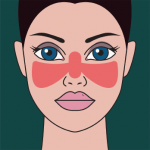Only one new medication, belimumab, has been approved for SLE in recent years, & current research emphasizes the development of biomarkers that might help target treatments based on disease subgroups.
Prednisone, a Double-Edged Sword
Forty-two percent of enrolled patients with inactive disease were taking prednisone, compared with 64% with very high disease activity. “This suggests that some ongoing treatment is required to maintain even a relatively low level of disease activity. The probability of disease flare-up at some time during the following year was substantial,” Dr. Peschken says.
Does measurable disease activity suggest the patient is not getting enough treatment, or the wrong treatment? “Generally speaking, rheumatologists keep going back to prednisone when they see disease activity, because they feel they have to do something,” she says. “The SLE patient can’t just be left untreated with active disease.”
But Dr. Peschken expresses surprise so many patients were receiving prednisone. Because of the side effects of long-term steroid treatment, the risk of organ damage from the disease must be balanced with damage caused by treatment. Rheumatologists are always looking for any other treatment options that might be out there. Lupologists (i.e., SLE medical experts) recognize the importance of working to reduce prednisone treatments to the greatest extent possible, but other physicians may not always appreciate the long-term importance of reducing prednisone use.
“[We know] control of this disease is suboptimal,” Dr. Peschken says. But it can be hard to find the right balance. “Our study finds a surprising number of patients where we’re not doing a good job managing their lupus, which underscores the need to keep looking for better treatment options.”
In other findings, there was no difference in the prescribing of recommended anti-malarial therapies across the different disease activity groups. And Dr. Peschken wonders about a possible relationship between income and disease activity levels. Canada has universal healthcare coverage, but not universal drug coverage, she says. Does income affect which medications get prescribed, with an emphasis on lower cost prednisone for those who can’t afford other drugs?
Bottom Line
A surprisingly high proportion of the study’s patients had active disease at any given time. The amount of disease activity dictates treatment strategies, Dr. Peschken says.
The next analysis target of the 1000 Canadian Faces of Lupus database is to identify and quantify the impact of disease activity on organ damage.
Larry Beresford is a medical journalist in Oakland, Calif.
